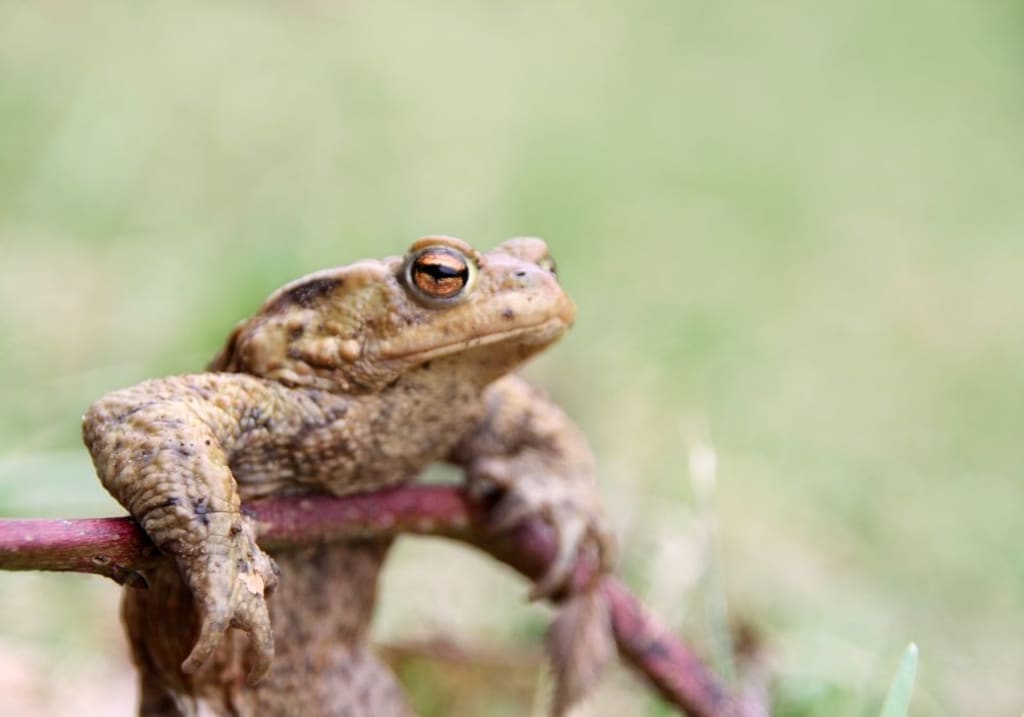How to Care for Your Pet Frog During Hibernation
A Comprehensive Guide

As the temperatures drop and winter approaches, it's essential to understand how to properly care for your pet frog during its hibernation period. Frogs, being cold-blooded animals, require specific environmental conditions to survive the colder months. In this comprehensive guide, we'll cover everything you need to know about caring for your pet frog during hibernation, ensuring its health and well-being throughout the process.
Understanding Frog Hibernation
Hibernation is a state of reduced metabolic activity and lowered body temperature that allows frogs to conserve energy and survive periods of cold or scarce food. During hibernation, a frog's heart rate and breathing slow down significantly, and it may not eat for several months.
Different species of frogs have adapted to hibernate in various ways. Some, like the American Toad, burrow underground to escape the frost, while others, such as the Wood Frog and Gray Treefrog, are freeze-tolerant and can survive being frozen. Aquatic frogs, like the Bullfrog and Green Frog, hibernate underwater, absorbing oxygen through their skin.
Preparing Your Frog's Habitat for Hibernation
As a responsible pet owner, it's crucial to create an environment that mimics the natural conditions your frog would experience during hibernation. This involves adjusting the temperature, humidity, and substrate in your frog's enclosure.
Temperature
The ideal temperature range for most frog species during hibernation is between 40°F and 50°F (4°C and 10°C). It's essential to maintain a stable temperature throughout the hibernation period, as fluctuations can be detrimental to your frog's health.
To achieve the desired temperature, you may need to use a combination of heating devices, such as heat mats or ceramic heaters. Always use a thermostat to prevent dangerous temperature fluctuations.
Humidity
Maintaining the correct humidity levels is crucial for your frog's health during hibernation. The ideal humidity range varies depending on the species, but generally, it should be kept between 50% and 70%.
To increase humidity, you can use a mister or a small water dish in the enclosure. Make sure to change the water regularly to prevent the buildup of bacteria and algae.
Substrate
The type of substrate you use in your frog's enclosure can greatly impact its ability to hibernate successfully. For aquatic frogs, a substrate of gravel or sand is suitable, while tree frogs may prefer a mix of soil and sphagnum moss.
Avoid using substrates that are too abrasive or can be easily ingested, as they may cause digestive issues or impaction.
Preparing Your Frog for Hibernation
Before your frog enters hibernation, it's essential to ensure that it is healthy and has enough fat reserves to sustain it through the winter months. Here are some tips to help prepare your frog for hibernation:
Feeding
In the weeks leading up to hibernation, increase the amount of food you provide your frog to help it build up its fat reserves. However, stop feeding your frog about two weeks before the expected start of hibernation, as it will not be eating during this period.
Monitoring Health
Carefully observe your frog for any signs of illness or injury before hibernation begins. If you notice any unusual behavior or physical symptoms, consult with an exotic animal veterinarian immediately.
Caring for Your Frog During Hibernation
Once your frog has entered hibernation, it's essential to minimize disturbances and maintain the proper environmental conditions. Here are some tips for caring for your frog during this period:
Temperature and Humidity
Regularly check the temperature and humidity levels in your frog's enclosure to ensure they remain within the ideal range. Make adjustments as needed to maintain a stable environment.
Monitoring
While your frog will be less active during hibernation, it's still important to check on it regularly to ensure it is healthy and undisturbed. Avoid handling your frog unless absolutely necessary, as this can disrupt its hibernation cycle.
Feeding
Most frogs will not eat during hibernation, so it's not necessary to provide food. However, it's a good idea to have some live insects or other appropriate food items available in case your frog does wake up unexpectedly.
Caring for Your Frog After Hibernation
When your frog emerges from hibernation, it will likely be hungry and in need of some extra care. Here are some tips for caring for your frog after hibernation:
Feeding
Gradually reintroduce food to your frog, starting with small portions of its favorite insects or other appropriate prey items. Monitor its appetite and adjust the amount of food accordingly.
Health Monitoring
Carefully observe your frog for any signs of illness or injury after hibernation. If you notice anything unusual, consult with an exotic animal veterinarian immediately.
Habitat Adjustments
As the weather warms up, gradually adjust the temperature and humidity levels in your frog's enclosure to mimic the changing seasons. This will help your frog transition back to its normal activity levels.
Conclusion
Caring for a pet frog during hibernation requires patience, attention to detail, and a commitment to providing the best possible environment for your amphibian friend. By following the guidelines outlined in this guide, you can help ensure that your frog remains healthy and happy throughout the hibernation process. Remember to always consult with an exotic animal veterinarian if you have any concerns or questions about your frog's care.
About the Creator
Hasan
Welcome...
In this site of mine you can learn amazing things and many information that you don't know so please subscribe to my site.
Enjoyed the story? Support the Creator.
Subscribe for free to receive all their stories in your feed. You could also pledge your support or give them a one-off tip, letting them know you appreciate their work.






Comments
There are no comments for this story
Be the first to respond and start the conversation.